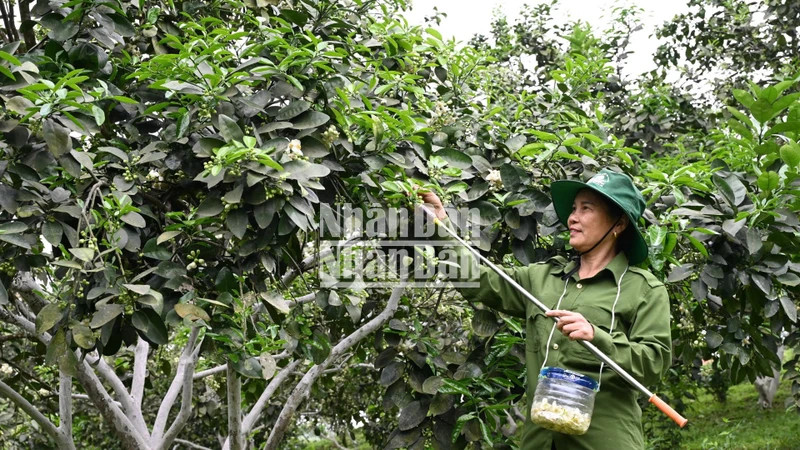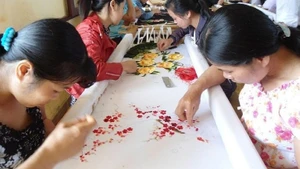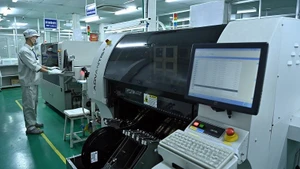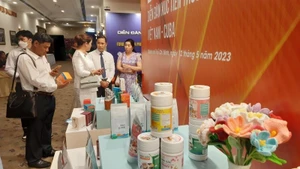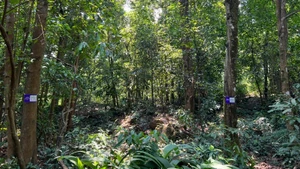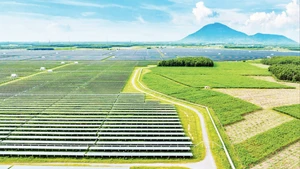Since ancient times, Phuc Trach grapefruit has been honoured as “the most famous fruit”, this is a unique specialty product, which has been granted a certificate of registration for geographical indications by the Department of Intellectual Property under the Ministry of Science and Technology in Huong Khe District. And at the same time, this is one of 39 geographical indications of Vietnam that the EU has committed to protect since August 1, 2020. Phuc Trach grapefruit has also been included in the list of rare trees, and banned from exporting by the Ministry of Agriculture and Rural Development.
Huong Khe District currently has about 2,760 hectares of Phuc Trach grapefruit. This is a specialty tree with very high economic value, each year generating a total income of about 600 billion VND.
Although Phuc Trach grapefruit trees have taken root in the mountainous district of Huong Khe for hundreds of years, due to the low natural fruit-bearing ability of grapefruit trees, people must conduct additional pollination to ensure crop productivity. Therefore, during the grapefruit flowering season, households gather in the garden to pollinate. The period lasts about 20 days, until the last flower crop.
For additional pollination, people use pollen from grapefruit trees of other varieties, usually planted by sowing seeds (Phuc Trach grapefruit is a grapefruit tree grown by grafting) and brush it onto the pistil of Phuc Trach grapefruit flowers.
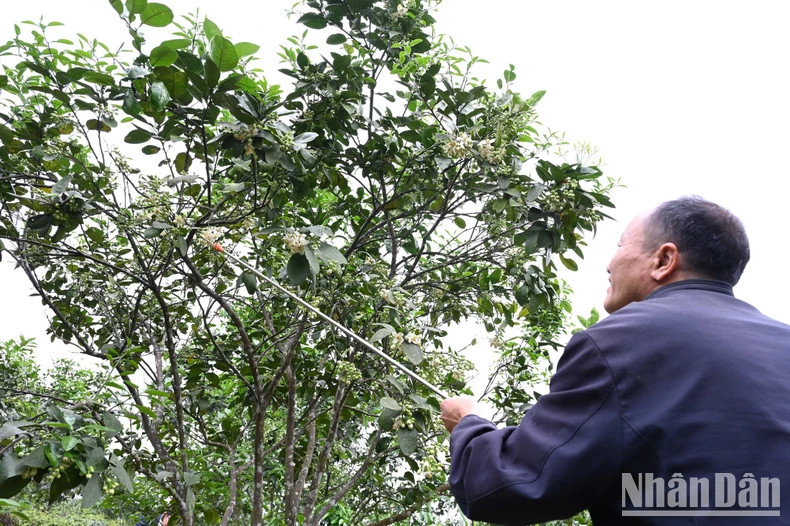 |
| Phan Trong Chien from Huong Thuy Commune (Huong Khe) spends most of his time on pollination. |
According to the introduction of the leader of the Department of Agriculture of Huong Khe District (Ha Tinh), we were present at the grapefruit garden of Phan Trong Chien's family in Village 6, Huong Thuy Commune (Huong Khe). Through the introduction of the homeowner, we learned that on an area of more than 1 hectare of land, he and his wife have planted more than 500 Phuc Trach grapefruit trees, with an average of more than 350 million VND per year in grapefruit products for his family. This is also the main source of income for the family, so the couple always spends most of their time caring for and nurturing the plants.
Chien added that with the current Phuc Trach grapefruit trees, additional pollination is almost mandatory to ensure the fruit set rate. His family has completed the care of spring rice, so they will devote all their time to pollination. In the coming days, when the grapefruit trees bloom more, the family may have to hire more workers to keep up with the season.
“Unlike last year, the 2025 grapefruit crop is slow to bloom. It was not until the end of the first lunar month that the Phuc Trach grapefruit tree began to bloom, nearly a month later than usual. Along with that, in the first days of blooming, the continuous cold and rainy weather interrupted the artificial pollination process, causing many people to worry. These days, when the weather is more favorable, households are busy going to the garden to pollinate the grapefruit flowers in time”, Chien shared.
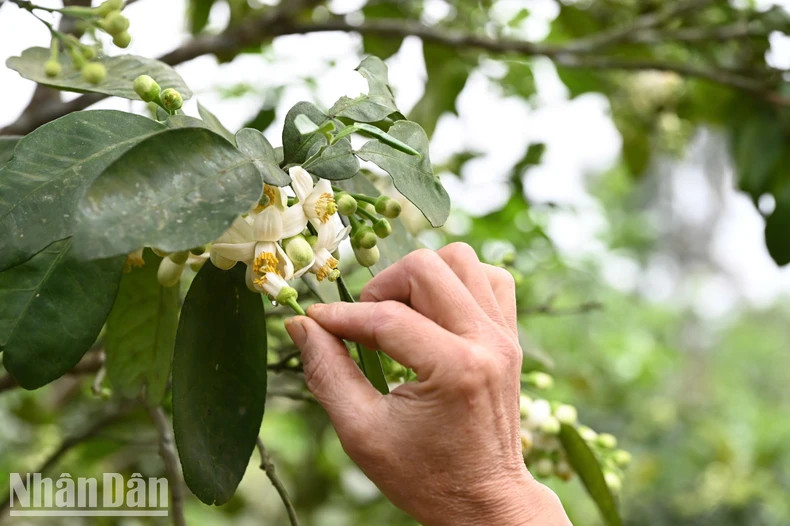 |
| For additional pollination, people use pollen from other grapefruit trees to sweep onto the pistils of the Phuc Trach grapefruit flowers. |
According to local grapefruit growers, Phuc Trach grapefruit trees are divided into two types: the sugar grapefruit is the main tree, grown by grafting or cutting from seedlings, and the sour grapefruit is the secondary tree, grown by sowing seeds to get flowers and pollinate the sugar grapefruit tree.
In addition, to increase the pollination efficiency for Phuc Trach grapefruit trees, local people also use pollen from other grapefruit flowers such as Dien grapefruit, green-skin grapefruit, etc., to cross-pollinate with Phuc Trach grapefruit.
Tran Dinh Hien from Dong Giang Village, Loc Yen Commune (Huong Khe), the owner of a grapefruit garden with the highest productivity and quality in the locality, revealed the secret to achieving a high fruit set rate for grapefruit: “If the weather is warm and sunny, pollination will be more effective. While the weather this year is erratic, at the beginning of the flowering season, it was cold and rainy, so we could not pollinate. On warm and sunny days, we worked hard to go to the garden to pollinate. This work is quite hard because many grapefruit trees are large and tall, so to pollinate effectively, we have to climb ladders and use poles. At the same time, the work also requires meticulousness and carefulness.”
Through training courses, technology transfer and long-term experience growing grapefruit, most grapefruit growers in Huong Khe have mastered additional pollination techniques.
Director of the Centre for Application of Science and Technology and Protection of Plants and Livestock of Huong Khe District Tran Hoai Son
Tran Hoai Son, Director of the Centre for Application of Science and Technology and Protection of Plants and Livestock of Huong Khe District said that although the grapefruit flowering time in 2025 is later than usual, this year is a leap year (lunar calendar) so it will not greatly affect the fruit development process.
However, the weather at the time of flowering is erratic, with many days of heavy rain and humidity, which easily causes many types of pests and diseases. In addition to focusing on pollination, people must closely monitor the garden to have timely and effective prevention solutions.
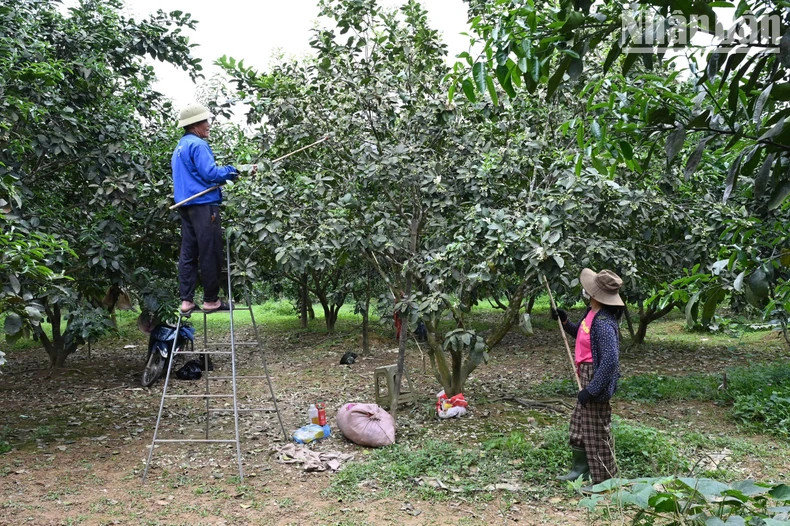 |
| The pollination stage for grapefruit flowers requires meticulousness and carefulness. |
“Through training courses, technology transfer and long-term experience growing grapefruit, most grapefruit growers in Huong Khe have mastered additional pollination techniques.”
The Director of the Center for Application of Science and Technology and Protection of Plants and Livestock in Huong Khe District said and recommended that in cases of unfavorable weather and heavy rain, people can use the method of drying pollen with a light bulb to conduct pollination.
Grapefruit trees often produce many batches of flowers. Continuous pollination is necessary to ensure no flowers are missed, and combined with branch hygiene to prevent pests and diseases.
